Just a few short years ago, whereby given the timescales involved one could convincingly argue just a few short hours ago, coal looked very much like yesterday's resource as the international community, or at least a sizeable part of it, promised to move away from coal and embrace novel fuels.
A commitment to a move away from coal, and fossil fuels in general, that recent geopolitical and economic developments have stalled; have led the international community to move away from their commitment to move away from coal.
A state of affairs which doesn't change the fact that the global coal supply is finite. That a post-coal future is coming. Sooner or later.
With the exhibition At the coalface! Design in a post-carbon age, the Centre for Innovation and Design at Grand-Hornu provide space for reflection on our various and varied relationships with coal, past, present and (possible) future.......
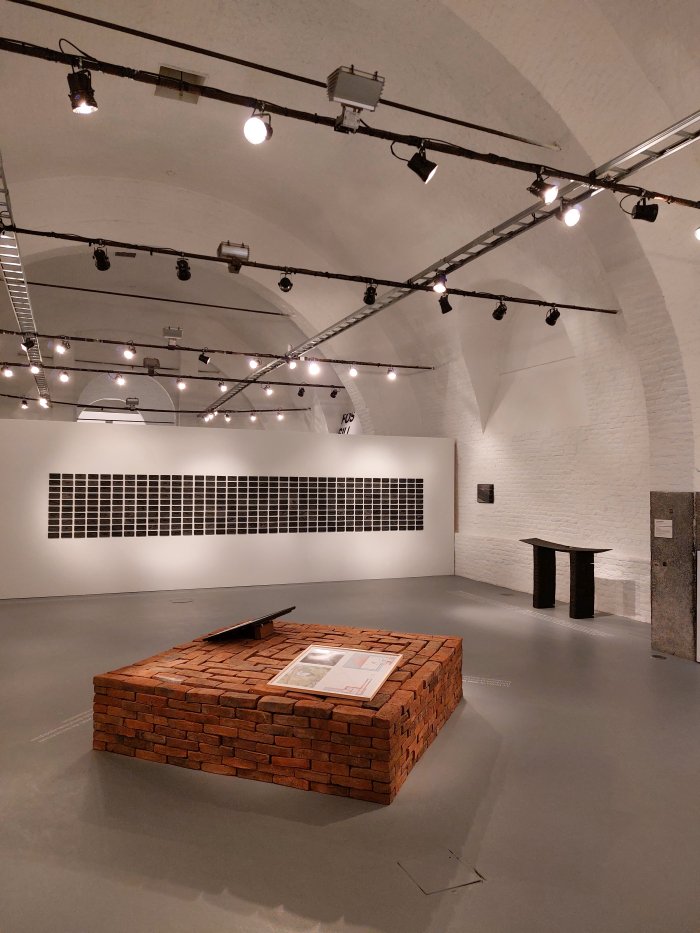
As any fule kno, coal is the result of hundreds, thousands, of centuries of organic decay and degradation, the result of trees, plants, and whatever else was in the vicinity, slowly, irreversibly, being squashed and transformed by the mass of history continually accumulating on top of it. The last traces of pre-human worlds whose realities we believe we can imagine, but can never fully experience, nor fully understand, becoming amalgamated, condensed, anonymised, by the pressure of time moving unremittingly forward. And past worlds' stonified organic matter which exists, quietly, peacefully, deep underground. Or did until human society discovered it, discovered uses for it, discovered ways of making money from those uses, and in its infinite wisdom began mining it in immense, uninhibited, quantities.
A moment in (hi)story which, in many regards, marks the rise of Homo faber who, according to Hannah Arendt, "becomes lord and master of nature herself insofar as he violates and partly destroys what was given to him".1
And the moment the path to our contemporary industrial society begins, the moment the path to our coming post-industrial society begins, the moment the path to the contemporary climate of our planet begins.
At the coalface! Design in a post-carbon age begins just after that moment, with the chapter Landscapes.
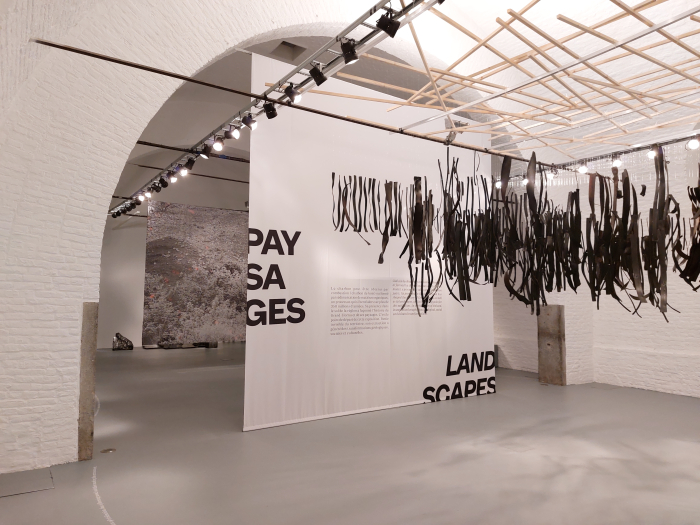
An opening chapter whose title elucidates that the extraction of coal not only changes the geology below the ground at a rate faster than nature herself could ever conceive possible, but also changes the physical environment above the ground, the landscape, something perhaps most obvious in the open-cast mines featured in Joanie Lemercier's film Slow Violence, a film presented at the end of the exhibition and to which we will return, but also evident in deep mining through, for example, the headframes, the pit-head towers, that a Lucius Burckhardt, a man who spent an inordinate amount of time walking through and reflecting on post-industrial landscapes, once employed as an example of how that which we understand as Landschaft, landscape, is not only that which nature provides but also those man-made structures we understand as being in the correct location, our preformed, prejudiced, image of which structures should be found in any given area, of a landscape as being authentic.2
And changes to the above ground environment also undertaken through the slag heaps of earth and stones which grow near mines to form artificial elevations where geology never intended such to be, and in doing so become part of not only the local landscape but also part of both the local identification with that landscape and the external impression of that landscape, part of the self-image and the tourist gaze. And which in At the coalface! are reflected on by Belgian photographer Laetitia Bica's study of slag heaps in northern France, and for all the alien flora that establishes itself on those alien environments and which Bica relates to those individuals who in times past relocated from their native regions to northern France to work the mines; and also by the vase La Montagne Noire by Roubaix based Aequo Design and Lille based ceramicist Valérie Fortin, a conical raku vase which mirrors the idealised, rationalised, form of those same northern French slag heaps, and thereby reinforces the slag heap as a component of everyday life and culture in those communities, and also reflecting on the overly simplified third-party image of that region, on the over simplified, inflexible, tourist gaze.
And two projects associated with mining and mining communities on the other side of the French/Belgian border from Grand-Hornu, the site of a former mine3 on the same basin as those mines in northern France which produced the slag heaps on which Bica, Fortin and Aequo reflect, which remind us all that coal basins are expansive and no regarders of our artificially defined borders. And also reminds that the consequences of our exploitation of coal are also no regarders of our borders.
Consequences which are one of the reasons the international community, or at least a sizeable part of it, promised to move on to novel fuels, to move away from coal.
Consequences which make considerations on coal, and our past and present relationships with coal, a subject for us all.
Consequences which make considerations on coal, and our future relationships with coal, a subject for us all.
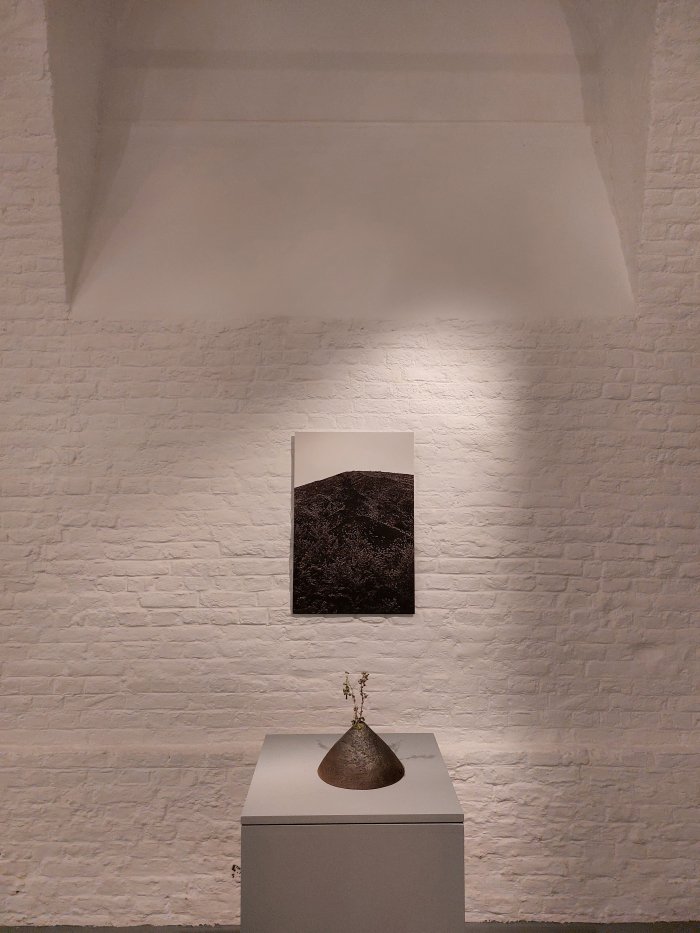
Yet consequences barely mentioned in At the coalface!
Pleasingly.
Rather At the coalface! very much leaves you to reflect yourself on the consequences of our exploitation of coal, assumes we all know what's going on, regardless of how openly, or otherwise, we individually accept and acknowledge that, and sees only little reason to directly approach the subject; and thus while an exhibition about coal, an exhibition in which coal is physically very present, is also an exhibtion in which coal is of secondary importance; much more in the foreground are alternative perspectives of and positions to coal. Paths to approaching understandings of coal as more than the black stuff we mine in immense, uninhibited, quantities in order to feed the ravenous appetite of Homo faber.
To this end At the coalface! presents a mix of projects which move effortlessly between art, design, documentation and speculative research every bit as easily and naturally as coal seams move between Belgium and France. Projects such as, for example, and amongst others, Barren by Luke Fuller which embodies an approach to ceramics developed by Fuller that was informed by the stratification and imprecision of geology, and an imprecision also found in the structure of coal and which is one of the things that, tantalisingly, separates coal from diamonds with their strict internal order; objects from Jesper Eriksson's project Coal: Post-Fuel which questions why coal is considered a cheap product to be burned at will, while other finite materials mined with great effort from the earth, such as, for example, marble, are considered highly valuable, and a collection which features a stool crafted from coal to which we will return at a later date; Emile De Visscher's rapid petrification process, petrification as in fossilised not terrified, with is inherent reflections on the forming of coal, the processes and time and specific conditions that lead to coal, and a petrification process also taken up and employed in Jenna Kaës' urns and Grégory Lacoua's project Briques.
Or From Below by Philipp Weber which explores coking, that transformation of coal to coke, a process very closely associated with, and key empowerer of, the rise of 19th century industrialisation where it was needed for iron production; and a process Philipp reduces, essentially, to a craft process, thereby offering a perspective for coal beyond its immense, uninhibited, use. And also evoking memories of the response of a William Morris to late 19th century industrialisation, of making that industrialisation more humane, less invasive, less dominant. A resistance to Home faber.
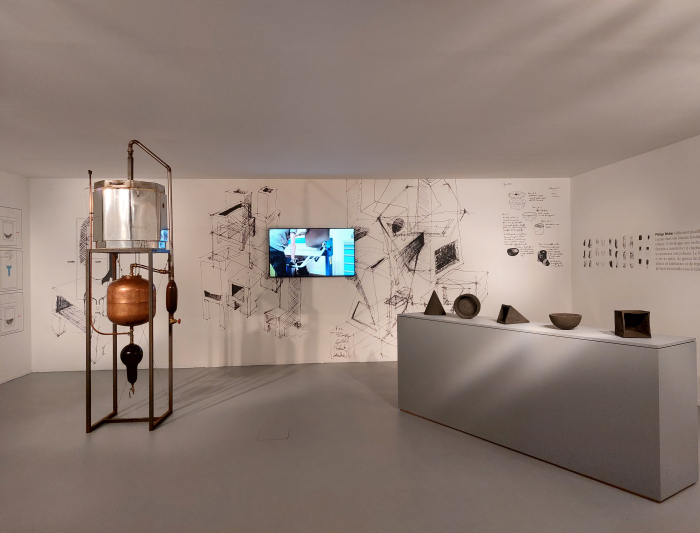
Alternative perspectives of and positions to coal that include brief discussions on the fact that for all coal causes problems, the carbon which forms the largest component of coal can be positive: carbon, for example, can detoxify, purify, properties the international soap and shower gel community have discovered of late, much too their collective joy, and properties discussed in At the coalface! through the Senscommon clothing collection by Laura Šilinska which employs textiles by Japanese manufacturer Uchino imbued with particles of activated charcoal by way of protecting against, for example, odours or microbial growth. Carbon can also act as a natural protector of wood, a knowledge practised in Japan for centuries under the term yakisugi and illustrated in At the coalface! by a console table by Kaspar Hamacher, a work which having carved from oak, Kaspar scorched a deep, protective, black. A work which being a contemporary Belgian interpretation of an ancient Japanese craft allows access to questions of cultural exchange as an important motor of creativity, and of the fine, but very important, border between exchange and appropriation. And projects which help underscore that in those contexts where coal is negative, the problem is, and as with our contemporary plastics emergency, often more to do with us than with the coal. Or with the plastics. Thus helping elucidate that the solution is also primarily to be found in humans, in contemporary human society.
And alternative perspectives of and positions to coal which pose questions of our relationships with the planet; including, for example, Studio Plastique's project Out of the Woods in which they sought/seek to mine the forest in a non-destructive manner to, and to return to Hannah Arendt, labour in the forest rather than work in the forest, through developing materials from that which the forest provides in context of its natural cycles, such as bark, dead leaves, pine needles or pine resin, rather than chopping down the trees for their wood. A cooperation with rather than exploitation of nature that stands diametrically juxtaposed to the brutal extraction of coal; and a collaboration rather than dominance, a mining rather than a mining, that stands physically juxtaposed in At the coalface! to Joanie Lemercier's aforementioned film Slow Violence, a film exploring the Garzweiler open-cast coal mine complex in western Germany, a film shot by drone which poetically explains the sheer dimensions of the Garzweiler complex, the consequences for flora and fauna of the region, and also the consequences for the human communities of the region, the latter being one of those lesser seen, lesser appreciated, consequences of our exploitation of coal, and thus a film which is one of the few direct references to the consequences of our exploitation of coal to be found in At the coalface!
A film which helps elucidate that, at least in English, there is an inherent mine in mining, even though that which is being extracted from the earth is collective. That Homo faber is a egotist.
And a mine whose continued, ongoing, operation is very symbolic of not only current discussions in Germany, and further afield, on the planned phasing out of coal that seemed to have been agreed, but which now has been postponed, nor only of discussions on the ongoing environmental, health, cultural and social consequences of coal exploitation, but also discussions of the transition from our relationships with coal past and present to our relationships with coal future.
A transition that will, must, come. Sooner or later.
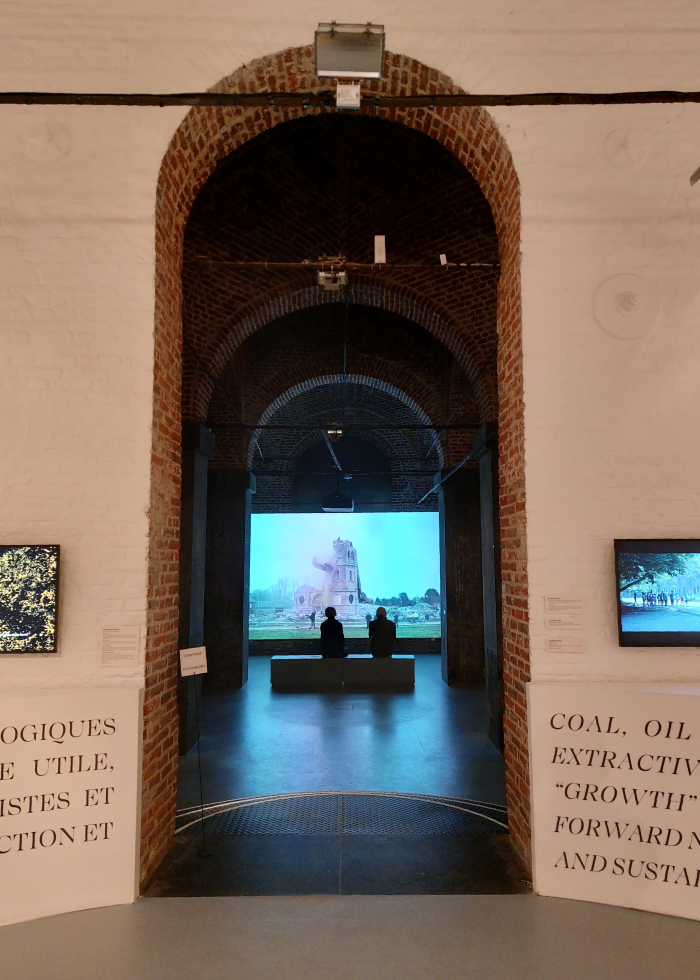
A bijou exhibtion in terms of projects, but not in terms of scope, its vista is as wide as the panorama over the Garzweiler mine, At the coalface! is very much a gallery exhibition, one which largely leaves you to find your own way to and through the projects, the associations, the connections, the extrapolations. And which gives you the space and time to do just that.
An exhibition whose original French title Au Charbon! is a French idiom for getting on with an unpleasant job, something that you don't want to do but have to, and which as such not only allows for reflections on the unpleasantness, grimness, of coal mining, certainly coal mining as it would have been practised back in the day in Grand-Hornu, and as graphically described in context of the contemporaneous mines on the other side of the French/Belgian border in Émile Zola's late 19th century novel Germinal, that is all to easy to appreciate; but also helps elucidate that whereas in centuries past the unpleasant job was extracting coal, today the more unpleasant job, certainly the job the greater majority of us prefer to leave to others, to pretend doesn't need doing, is leaving coal where it is.
An exhibition that for all it is about coal is an exhibition about resource usage, and which in its quiet way admonishes that while there is no reason that we shouldn't employ that which is around, we do need to be aware of the consequences of that usage, environmentally, socially, culturally and economically. And to be aware that those consequences, invariably, aren't local, rather are global. To question why and how and wherefore we use resources.
And, by necessity, an exhibition with an awful lot of black, but not a despondent black, rather is more reminiscent of that glorious black shimmer that once set the hearts of geologists and capitalists racing. A shimmer of possibility and of a brave new future.
A shimmer of possibility and of a brave new future that in many regards is/was also found in Plastic: Remaking Our World at the Vitra Design Museum with its reflections on our path to and then away from synthetic, carbon based, plastics; and also to be found in Mimesis. A Living Design at the Centre Pompidou-Metz with its movement from our imitating the forms of nature to our imitating the materials and structures of nature, to an understanding of nature as more than just objects. Of slowly developing collective understandings of nature not as something we need be "lord and master of" but as something we are a component of. And that which we actually need to "master" is ourselves. Our egos.
And a shimmer of possibility and of a brave new future At the coalface! doesn't offer any advice on how best to approach, but which through allowing access to differentiated reflections on the paths taken to the moment we currently find ourselves in, and through enabling differentiated reflections on what coal is, socially, culturally, geologically, environmentally, politically and economically, does help underscore that while the path forward is inevitable, the course it will take isn't. That course is for us all to define. And that preferably sooner rather than later.
At the coalface! Design in a post-carbon age is scheduled to run at the Centre for Innovation and Design at Grand-Hornu, Rue Sainte-Louise, 82, 7301 Hornu until Sunday January 8th.
Full information, including information on opening times, ticket prices and current hygiene rules can be found at www.cid-grand-hornu.be
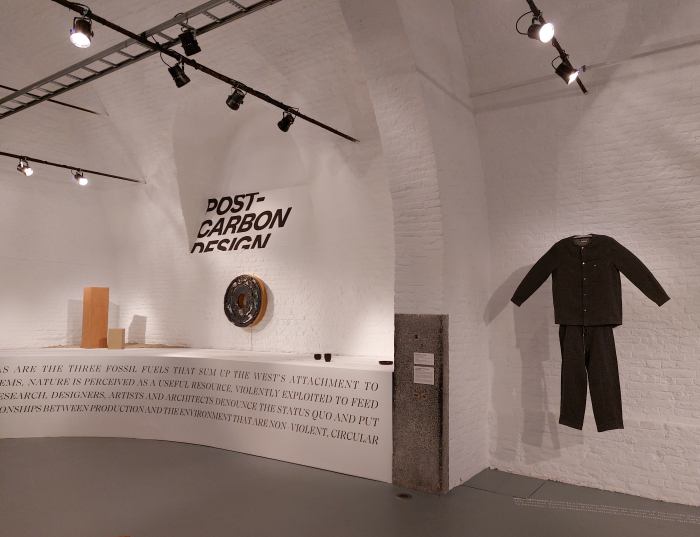
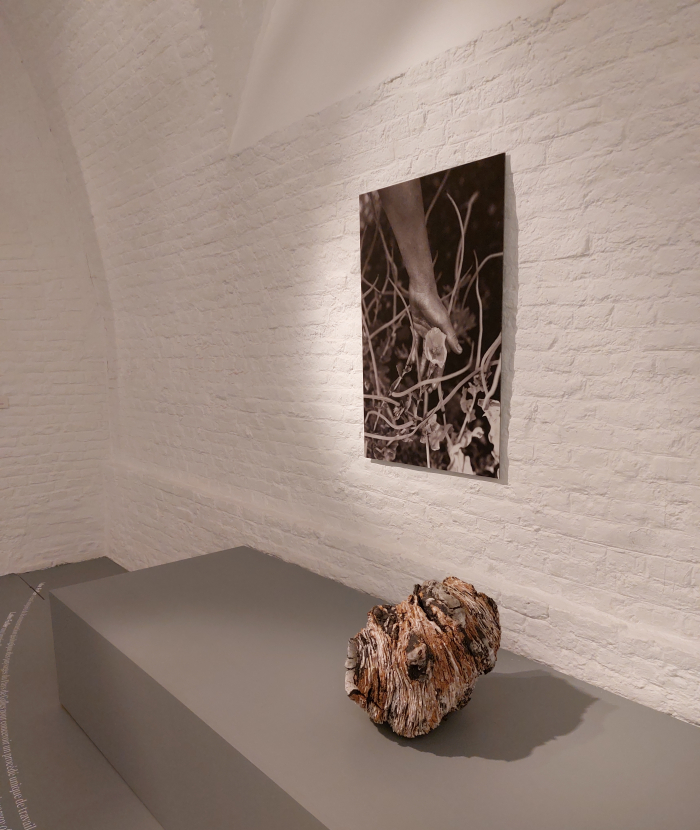
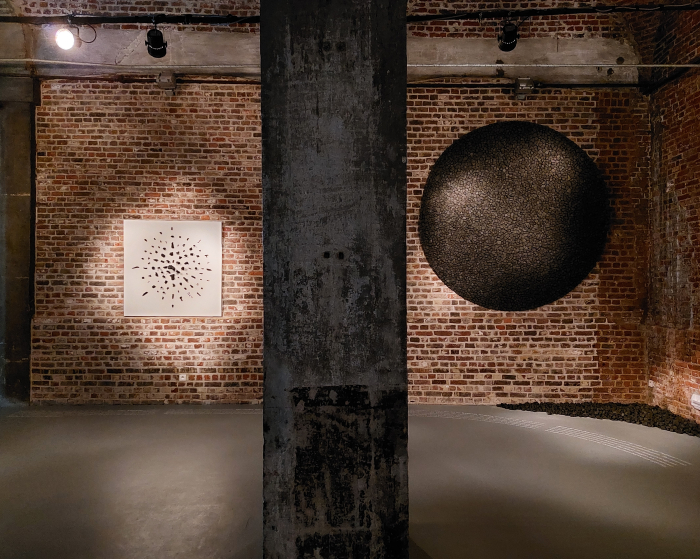
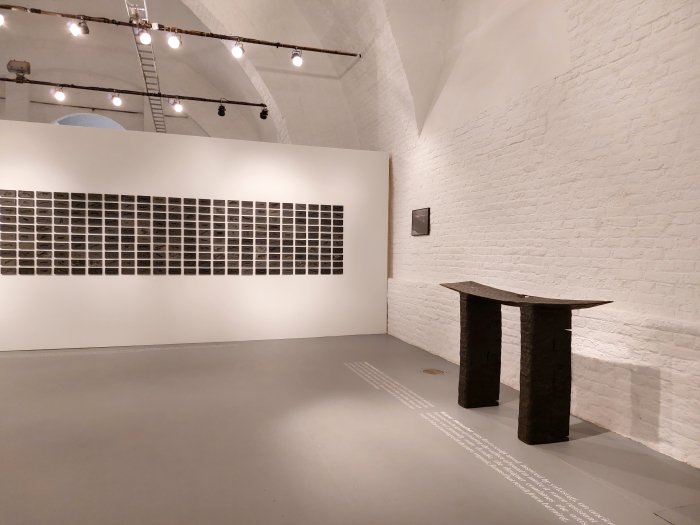
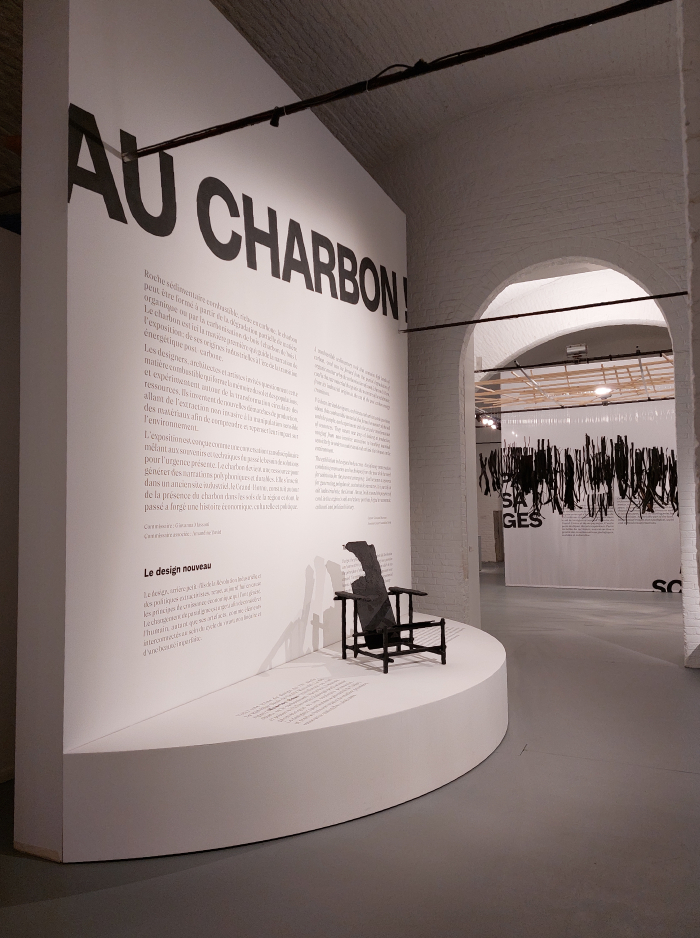
1Hannah Arendt, Labor, Work, Action, speech presented at the conference Christianity and Economic Man: Moral Decisions in an Affluent Society, Divinity School, University of Chicago, November 10th 1964, reprinted in S. J. James and W. Bernauer [Eds], Amor Mundi. Explorations in the Faith and Thought of Hannah Arendt, Martinus Nijhoff Publishers, 1987 For rhetorical purposes we take a very simplified understanding of, and quite a few liberties with definitions of, Homo faber, for which we don't apologise.......
2see Lucius Burckhardt, Brache als Kontext - Postmoderne Landachaften - gibt es das?, Wespennest - Zeitschrift für brauchbare Texte und Bilder, 110, 1998, reprinted in Markus Ritter and Martin Schmitz [Eds.], Lucius Burckhardt, Warum ist Landschaft schön? Die Spaziergangswissenschaft, Martin Schmitz Verlag, 2006 Specifically Burckhardt notes that whereas a headframe makes sense in the Ruhrgebiet and a dung heap makes sense in the Schwarzwald, if we see a headframe in the Schwarzwald we either ignore it, block it from our view, or get cross and demand its removal.
3Although the first mines were dug at Grand-Hornu in the 18th century, successful, commercial mining began in the early 19th and continued until the 1950s when the creation of the European Coal and Steel Community, a forbearer of the contemporary EU, led to the cessation of mining in the corner of Belgium Grand-Hornu calls home as a component of wider agreements on, and a collective restructuring of, coal mining in Europe. In 2012 Grand-Hornu, alongside three neighbouring ex-mines, became the UNESCO World Heritage site with the ever exciting title: Major Mining Sites of Wallonia. Whereby Major Former Mining Sites of Wallonia would be more accurate.